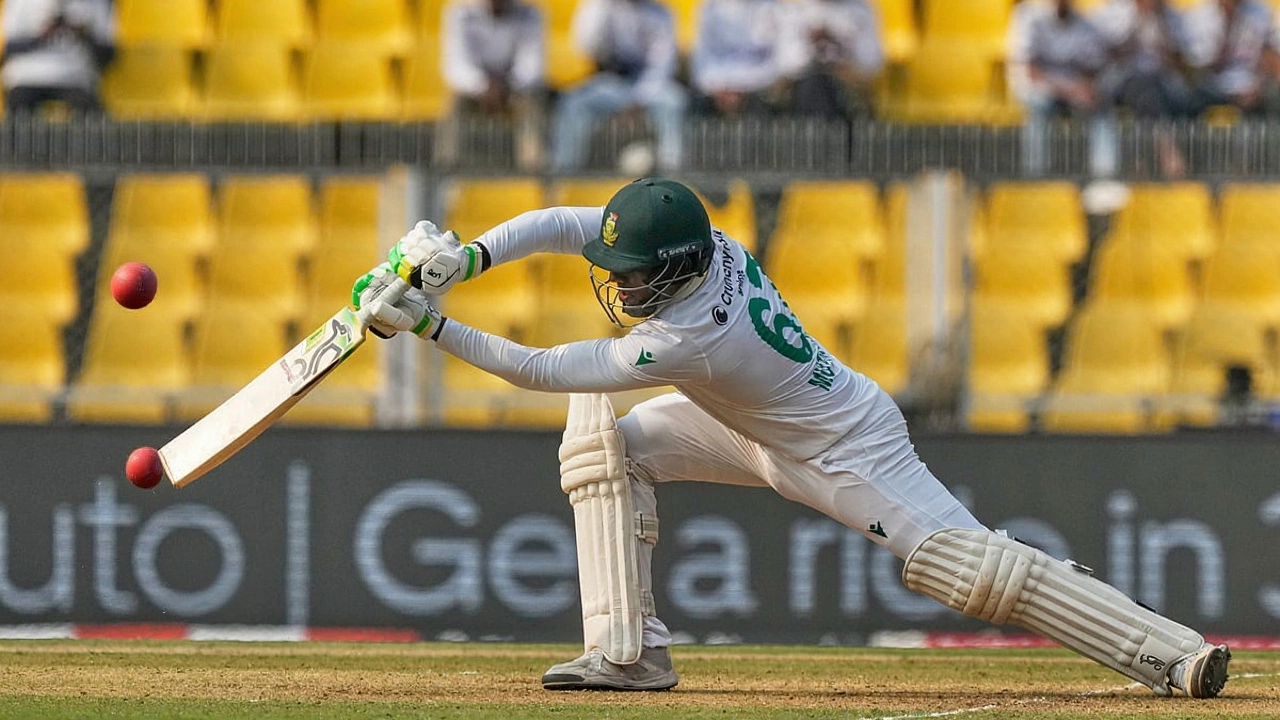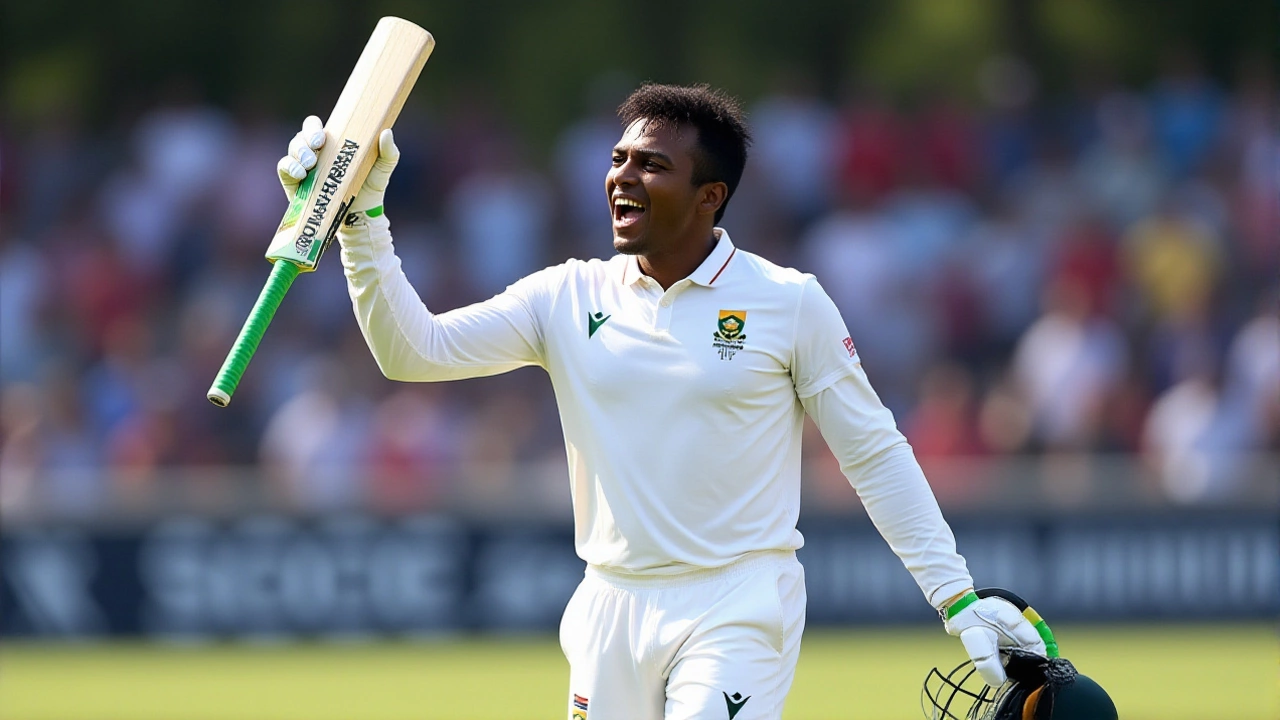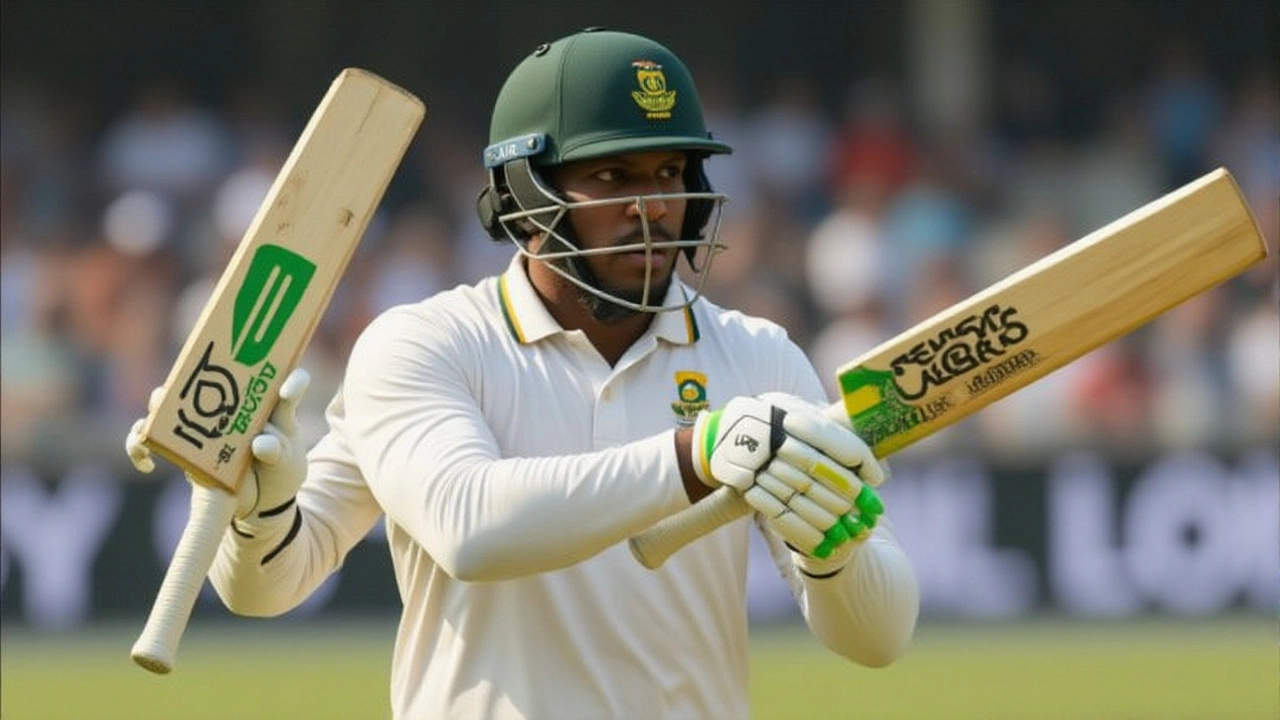
When the final bell rang at the Barsapara Cricket Stadium in Guwahati on Sunday, November 23, 2025, India’s batsmen were still searching for their rhythm—just 9 runs without loss after 6.1 overs, trailing South Africa by a staggering 480 runs. The South Africa cricket team had just posted 489 all out in their first innings, turning what was already a tough assignment into a near-impossible chase. And yet, somehow, India survived. No wickets lost. No panic. Just quiet, focused resistance. Here’s the thing: this isn’t about winning this Test anymore. It’s about saving face, saving the series, and saving their World Cup prep from unraveling.
How South Africa Built a Fortress
Day 2 was a masterclass in patience and precision. After finishing Day 1 at 247/6, with Senuran Muthuswamy (25*) and Kyle Verreynne (1*) holding firm, the Proteas didn’t just extend their total—they redefined it. Muthuswamy, the unheralded all-rounder from KwaZulu-Natal, batted for over six hours, scoring 102 before falling to Ravindra Jadeja in the 132nd over. Verreynne, the gritty opener who’d been dropped for the first Test, responded with 84, his highest Test score. But the real architect was Aiden Markram, whose 38 came at a crucial moment—just before tea, when he was castled by a stunning Jasprit Bumrah inswinger that clipped the top of off-stump. That wicket didn’t break the momentum; it just changed its shape.
The pitch, flat and true in the morning, turned into a spinners’ delight by afternoon. Keshav Maharaj (3/98) spun webs, while Marco Jansen and Simon Harmer found enough reverse swing to keep India’s openers guessing. The South Africa cricket team didn’t just score runs—they made India’s bowlers look ordinary. Kuldeep Yadav’s 3/48 from Day 1 felt like a lifetime ago.
Pant Steps Up, Gill Is Out
On the other side, Rishabh Pant is no longer just India’s wicketkeeper. He’s their captain, their emotional anchor, and now, their last hope. Shubman Gill, 25, was ruled out after a neck injury sustained in the first Test at Eden Gardens in Kolkata—a match India lost, handing South Africa the Freedom Trophy early. The series, contested biennially since 2015, was already slipping away. Now, with Pant leading a makeshift top order, the pressure is suffocating.
India’s batting, usually so reliable, looked disjointed. Yashasvi Jaiswal, the explosive opener, took 18 balls to get off the mark. His partner, Nitish Kumar Reddy, playing his first Test, looked every bit the part of a debutant—nervous, tentative, but determined. The absence of Gill’s calm authority was palpable. And the fielding? A missed slip catch by KL Rahul on Day 1, when Markram was on 12, still haunts the Indian camp. "That chance cost us 26 runs," one senior coach told reporters. "In a game like this, you can’t afford mistakes like that."

The Pitch and the Pressure
Guwahati’s pitch has been the silent third team. Early on, it was flat—batsmen carved boundaries like butter. But as the sun dipped and the dew set in, the spinners found grip. By Day 3, expect turn, variable bounce, and a surface that rewards patience over power. South Africa’s spin trio—Maharaj, Harmer, and even Jansen’s occasional off-breaks—will be licking their lips. India’s best hope? A long partnership between Jaiswal and Reddy. Something that lasts 100 overs. Something that buys time. Something that silences the doubters.
Historically, teams have chased 400+ in India on spinning pitches—just once since 2010. In 2012, India chased 405 against Australia in Mohali. In 2021, England chased 359 at the same Barsapara ground. But those were against weaker attacks. This South African side? They’re disciplined. They don’t blink. And they’ve got three frontline bowlers who can turn the game in 10 overs.
What’s at Stake Beyond the Scoreboard
This isn’t just about a trophy. It’s about identity. For South Africa, this series is the next chapter in their post-retirement rebuild. After the 2023 World Test Championship Final, legends like Dean Elgar and Kagiso Rabada stepped back. Now, players like Muthuswamy and Verreynne are stepping into the spotlight. They’re proving they belong.
For India, it’s about the 2027 World Cup. The team’s white-ball squad is stacked. But their Test core? Fragile. Pant’s leadership is being tested. Jadeja’s form is under scrutiny. And the opening pair? Still unproven. A collapse here could trigger a full-scale review of their Test strategy. The BCCI doesn’t panic easily—but 480 runs down with two days left? That’s a wake-up call.

Day 3: The Only Path Forward
India’s plan is simple: survive. No fireworks. No heroics. Just blocks, glances, and patience. They’ll need Jaiswal to play his natural game without getting reckless. They’ll need Reddy to hold one end. And they’ll need Pant to bat at No. 6—if he can even get to the crease. The bowling attack, led by Bumrah and Siraj, will need to strike early on Day 3. One wicket. Just one. To break South Africa’s rhythm.
It’s not about winning. Not anymore. It’s about dignity. About proving they can still fight—even when the odds are 10-to-1. The crowd in Guwahati is quiet now. But if Jaiswal and Reddy last until tea? The noise will come. It always does.
Frequently Asked Questions
How did Rishabh Pant become captain for this Test?
Rishabh Pant was named captain after Shubman Gill was ruled out due to a neck injury sustained during the first Test at Eden Gardens. With vice-captain Jadeja resting and KL Rahul not selected, Pant, as the senior wicketkeeper and most experienced batter in the lineup, was the natural choice. He’s now leading India in his 17th Test, and this is his first full Test as captain.
Why is the Barsapara pitch expected to favor spinners later in the match?
Barsapara’s surface, like many in Northeast India, has a clay-rich base that dries unevenly. After two days of batting, the pitch cracks slightly, and the spinners—especially Keshav Maharaj—find more purchase. The ball grips and turns sharply off the surface, making it difficult for batsmen to play sweep shots without risk. Historically, scores over 300 have been chased here only twice since 2015.
What’s the significance of the Freedom Trophy in this series?
The Freedom Trophy is awarded to the winner of the biennial Test series between India and South Africa, first contested in 2015. South Africa currently hold it after winning the first Test in Kolkata. Winning this second Test would be a major statement for them, especially with several veteran players retired. For India, losing the series would mean their first home series defeat against South Africa since 2010.
How does this match impact India’s World Cup 2027 preparations?
India’s Test team is seen as a testing ground for future ODI talent. If Pant, Jaiswal, and Reddy can hold their nerve here, they’ll be strong candidates for the 2027 squad. But a heavy defeat could trigger a leadership overhaul. The BCCI is already watching how players handle pressure in tough conditions—this Test is a key indicator of who can handle the mental grind of World Cup cricket.
Who are the key bowlers for South Africa in this match?
Keshav Maharaj leads the attack with his leg-spin, averaging 27.3 in away Tests since 2022. Marco Jansen, the all-rounder, provides pace and reverse swing, while Simon Harmer, the veteran off-spinner, has taken 28 wickets in his last five Tests. Together, they’ve bowled 78% of the overs in this innings and accounted for 8 of the 10 wickets on Day 2.
Has India ever recovered from a 480-run deficit in a Test match?
Never. India has never chased down a target over 400 in a Test match at home. Their highest successful chase is 405 against Australia in Mohali, 2012. The 480-run deficit here is the largest ever faced by India on home soil in the fourth innings. Even in 2001, when India chased 384 against Australia in Kolkata, they were still 112 runs short of this deficit.




